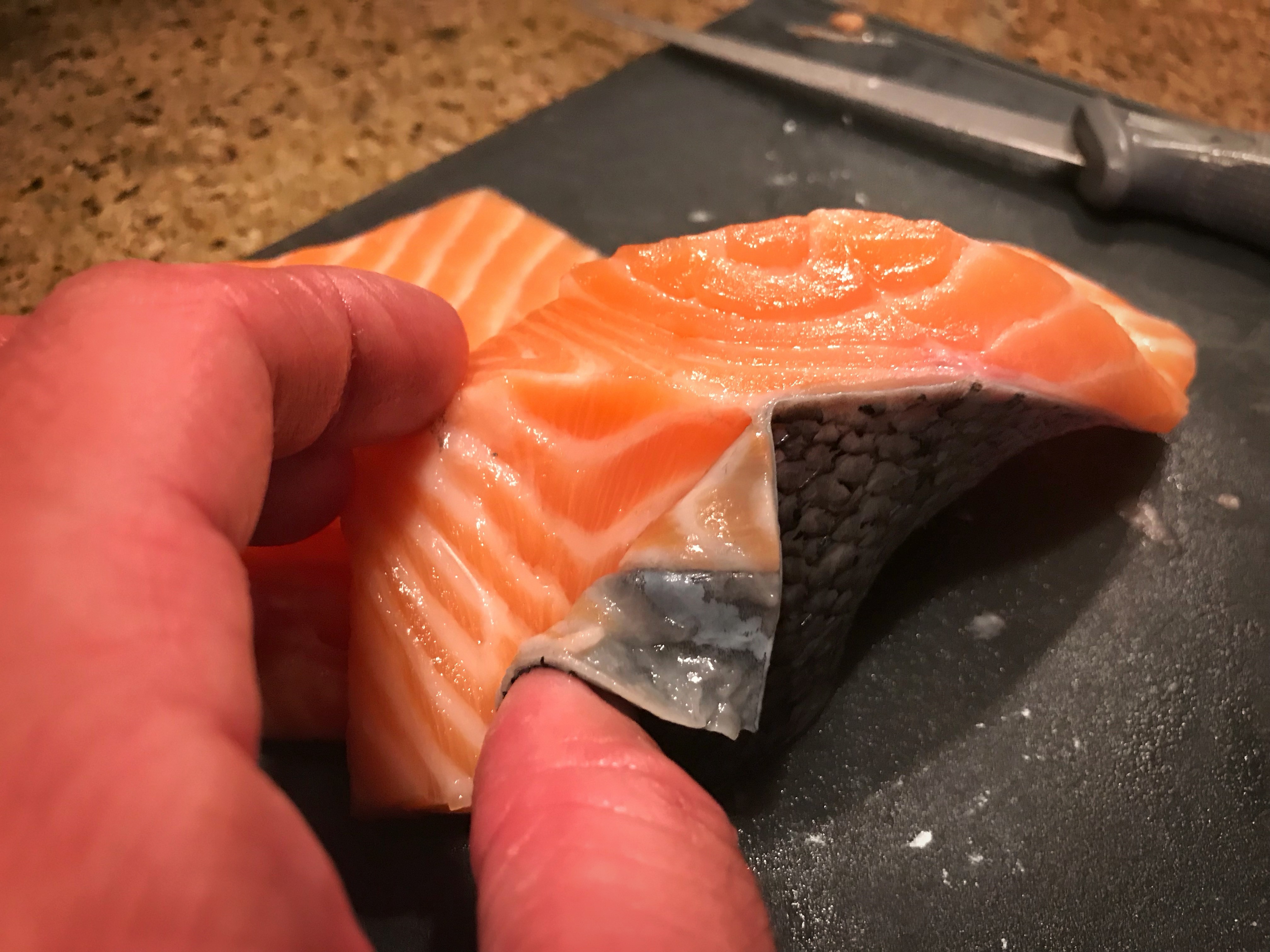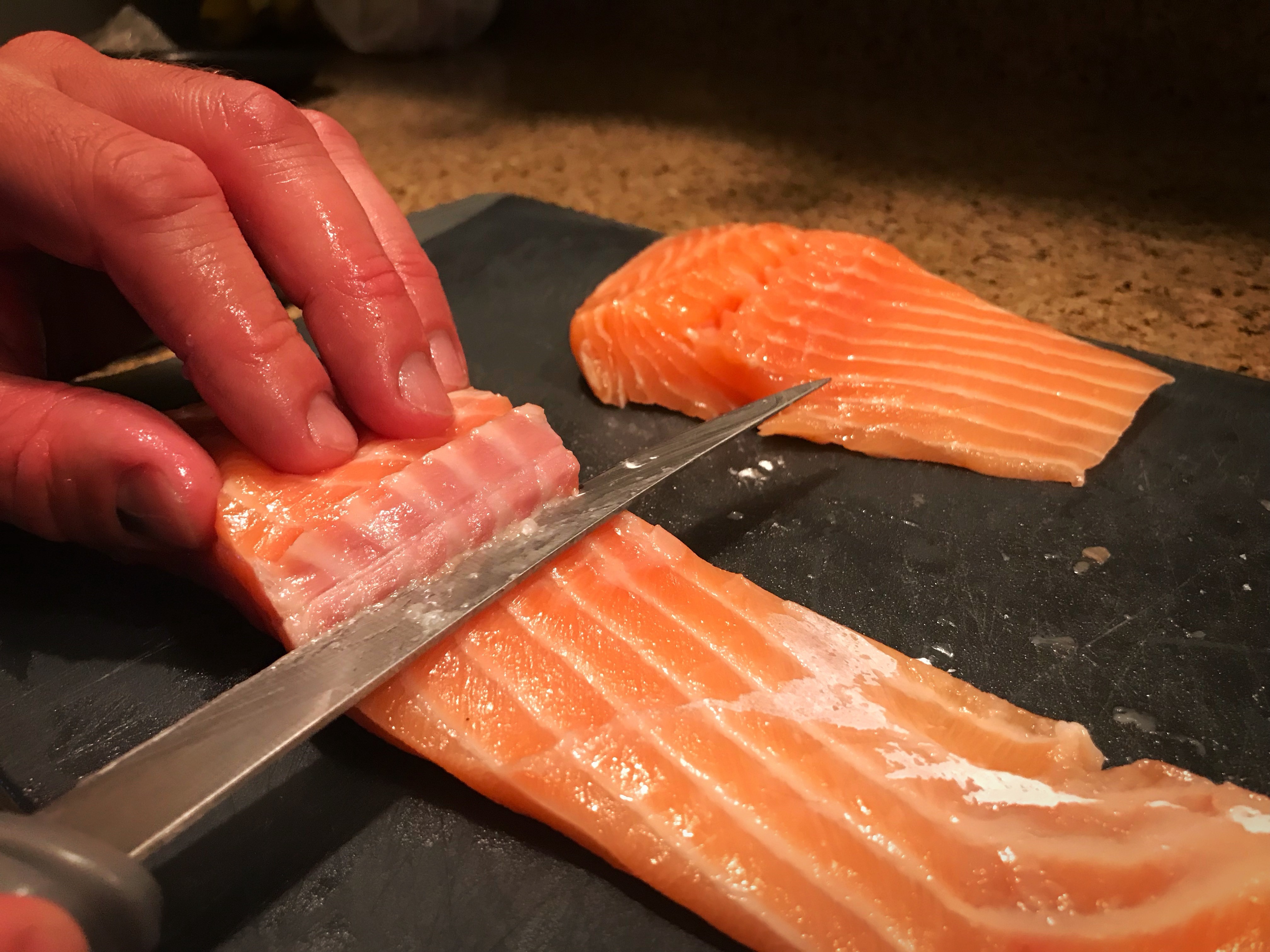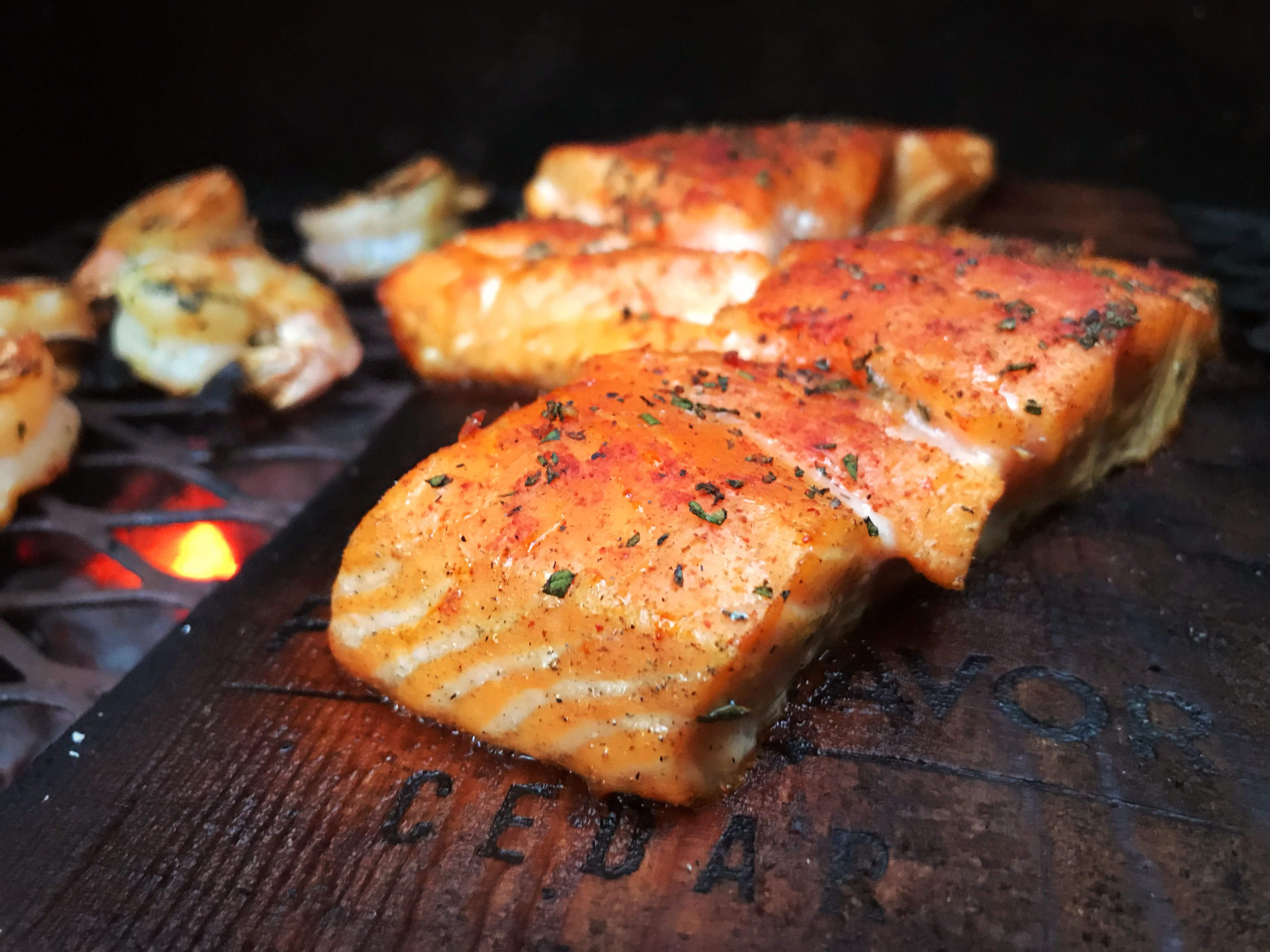There’s a distinct difference between the stomach moaning aroma of mesquite smoke from hardwood lump coal, and that of the standard charcoal briquettes. Add smoldering cedar into the mix and your neighbors will be stampeding to your backyard with mason jars trying to capture the smell to sell on eBay. Yeah, it’s that good.
As outdoorsmen we take great pride in cooking and consuming the bounty of our harvest, it’s all part of the process. Unfortunately, one bad experience is all it takes for a person to carry on avoiding wild game and freshwater fish consumption for many years down the line – as if the meat is to blame for improper handling from field to table and being over-cooked, or the type of fish and the way it was caught is to blame for the bones and “fishy” taste.
If you’re like me and love entertaining and cooking for guests, there’s no greater feeling than serving a wild caught meal so good it makes up for the lost time since your guests swore they’d never eat wild game, or fish from a lake, again.
One of my favorite dishes to make that keeps guests talking long after they’ve left is King Salmon. Salmon is one of those fish that people either love or hate, but I can tell you it’s not the fault of the fish that leaves a bad taste in the naysayer’s mouth – it has everything to do with freshness, how the filet is prepared, and how it is cooked.
If I’m having company and want to impress my guests with the best salmon dinner they’ve ever had, I’m either cedar planking it, or, searing it in a cast iron skillet. Either way, I’m doing it over hardwood lump coal for that touch of mesquite flavor that makes mouths water. The filet will be moist on the inside, while maintaining a firmer texture on the outside, it’s delectable. Flavor is half the battle, but texture and presentation are paramount.
Pre-Cooking Instructions
Before anything, place your cedar planks in the sink with enough water so that they float. Place the rough side down, as that is the side you’ll place down on the grill – the meat will cook on the smooth surface. It’s important to dampen the wood before grilling so they don’t catch on fire too quickly. I prefer cedar planks no wider than six or seven inches, no taller than twelve inches, and a half-inch thick.
Fresh is best when it comes to any fish or meat. Salmon are big, however, so go ahead and freeze what you can’t use and be sure to leave the skin on. Rather than freezing each filet separate with the skin side down and meet up, take two filets and stack them like a sandwich with the skin side of each filet on the outside; this will help prevent freezer burn.
 Removing the skin from the salmon filet before grilling
Removing the skin from the salmon filet before grilling
While leaving the skin on makes for a nice presentation, salmon is one of the few fish that tastes better with a crust from searing. Remove the skin with a filet knife and discard. Be sure to remove any scales that may have stuck to the meat. Use the edge of your filet knife to carefully brush them off and discard.
Removing the mud vein is the most important detail of prepping fish before cooking, as it is largely responsible for that “fishy” flavor that we all know and hate. Have you ever seen that brown and strangely textured meat on a salmon filet you may have had at a restaurant once upon a time? That’s the mud vein – remove it and discard.
 Removing the mud line portion of the salmon filet with a sharp filet knife.
Removing the mud line portion of the salmon filet with a sharp filet knife.
The thinner your filet, the more even it will cook and the texture will be not only visibly more appetizing, but easier to eat. Plus, you want your filet to fit on a small cedar plank for grilling. You want the meat close to the edge of the cedar, but not too close or falling off.
Seasoning Cedar Plank Salmon
Certain seasonings apply to different methods of cooking. For example, dill tastes great on salmon, especially complimented with lemon zest, but the flavor is all wrong for cedar. Don’t get carried away trying to create a flavor out of a dozen different seasonings – simple is always better. Here’s how I season skinless salmon before cedar planking over hardwood lump coal.
• Garlic powder lightly sprinkled all over (both sides)
• Salt lightly sprinkled over the top
• Sweet smoked Spanish paprika dusted over the top
• A pinch of fresh ground black pepper over the top
Prepping the Grill
Indirect cooking is the key to never over-cooking your meal because it allows you to control the amount of heat your meat is getting when you’re dealing with fire.
Build your hardwood lump coals off to one side of the grill and wait for them to have a salt and pepper appearance. Lump coal burns the hottest when it’s black and white, and it also emits the best flavor and aroma, so take advantage while it’s hot and start cooking.
 Cedar Plank Salmon on the Grill
Cedar Plank Salmon on the Grill
Cooking Instructions
1. Place the cedar plank on the grates indirectly above the lump coal embers with the rougher side facing down. You will see the dampness on the outside of the plank quickly diminish as it dries externally. When the surface of your cedar plank(s) is dry, lightly drizzle olive oil on the cedar plank with caution – oil will create flames if it drips into the burning coals. Stand back and wait for the oil to begin simmering on top of the cedar plank. If it appears to dry up, add more – you want enough to create a crust on the bottom side of the salmon and prevent it from sticking to the cedar when it cooks. This usually takes several minutes. Close the grill lid to prevent the cedar from catching fire.
2. The hotter the cedar plank, the better it will cook the salmon. Place the filet(s) down on the cedar plank(s) so that they are offset to allow even cooking for each filet.
3. Use a grilling tool to safely slide the cedar planks towards the heat, but do not place directly over the hot bed of lump coals. Placing the cedar planks directly over the coals will ignite the cedar and it will cinder rapidly – not what you want.
4. When cedar planking salmon, NEVER flip the filet. It is important to babysit the salmon while it grills as you may need to slide the planks around a bit depending on the amount of heat they are getting. I prefer to grill salmon closed lid to keep the coals burning moderately, the extra air flow will cause the lump coals to burn hotter and may cause the cedar plank to catch fire. Now and again, lift the lid of the grill to check the consistency of the cooking salmon. You should see small bubbles simmering between the cedar plank and the salmon filet(s) as the oils of the cedar wood permeate the filet.
5. When the salmon filet(s) begin to expel noticeable white liquid from the top side of the filet, use a large hamburger flipper, or a grilling tong to remove the cedar plank(s) from the grill and set them aside on a grated surface that won’t be ruined from the heat. Unlike oven baked cedar planked salmon like you get at most restaurants, the bottom of the cedar plank(s) will be charred and may have burning embers, so use caution if you bring them into your house immediately off the grill.
6. To remove the salmon from the cedar plank(s), use a thin hamburger flipper and be gentle as you slide the flipper under the filet so you don’t break it in half. Serve hot and enjoy!
This skinless cedar planked grilled salmon recipe will leave your guests so impressed that the next time they visit, they’ll be asking to bring a friend just to try your cooking!





